Arguably more than any other watch, it is the Rolex Datejust that best defines the Rolex brand. Created in an era that pre-dates the proliferation of the tool watch, the Datejust was intended to be the only timepiece that a person would ever need and it was designed to be worn all day, every day for the entirety of that individual’s life. For many people, the Datejust is – and always will be – the quintessential Rolex watch.
First launched in 1945 to celebrate Rolex’s 40th anniversary, the Datejust collection has maintained one of the most consistent design languages of any timepiece in the entire industry, despite constantly evolving both inside and out. While this consistency in design has made it a true horological icon, it also means that choosing the perfect model can be anything but a straightforward task.
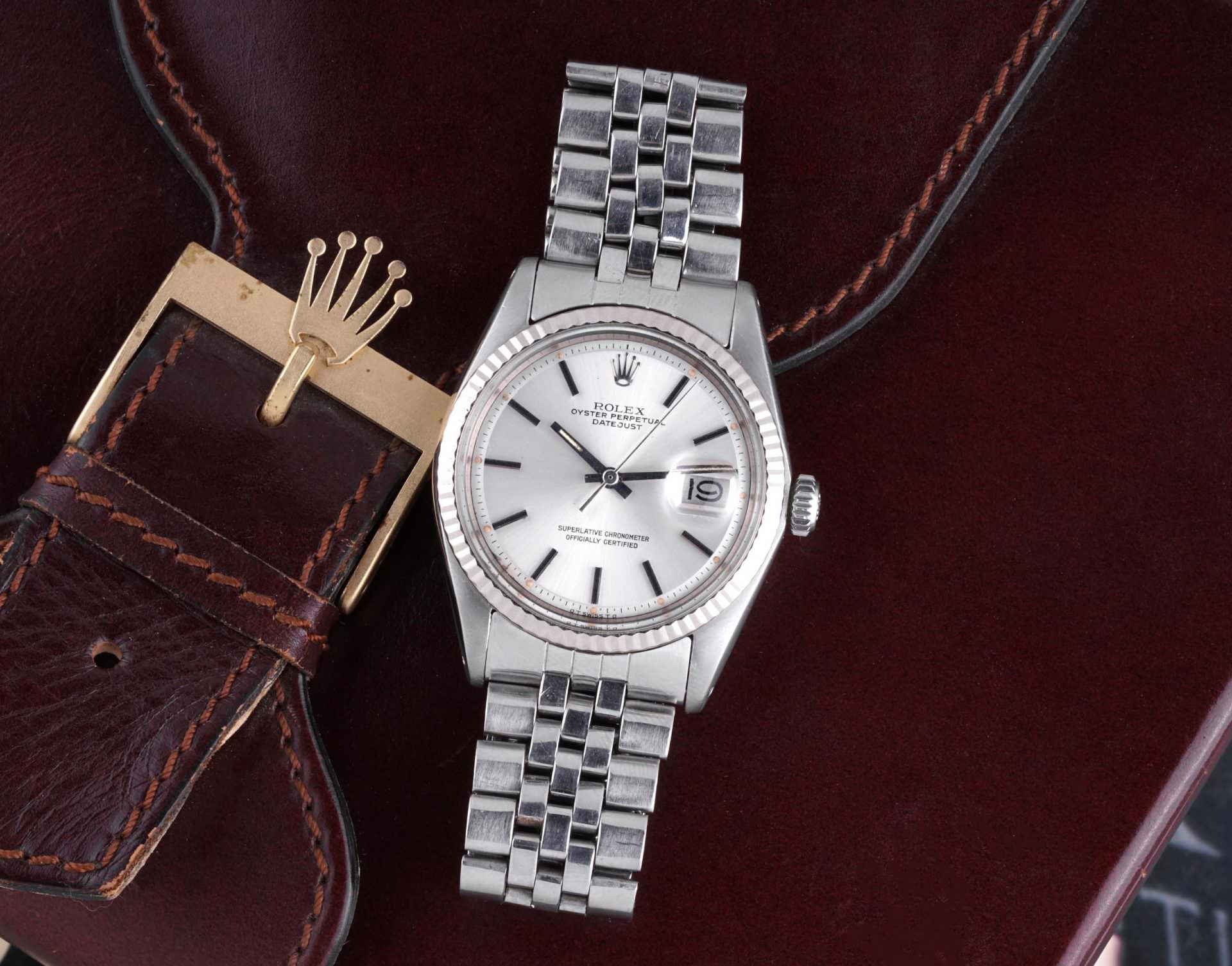
Before we dive in, let’s first get a few things out of the way. We aren’t going to be covering the midsize or Lady-Datejust watches here today. That is a whole other can of worms, and to properly cover all the different sizes, this guide would become a full-on dissertation. Additionally, there is no concrete definition for what classifies as “vintage” but for the purposes of this guide, we will be limiting our discussion to the models with acrylic crystals, which span from the Datejust’s launch in 1945 until approximately 1988 when sapphire crystals were introduced to the collection.
Unlike some Rolex models that have only ever been crafted from stainless steel and offered in a limited number of configurations, the Datejust is the most diverse collection of watches that Rolex has ever put forward. You will find models in everything from stainless steel to solid platinum and everything in between. Additionally, you will also find examples with a range of different bezels and fitted with a dizzying variety of dials, along with a small handful of different bracelet styles and even leather straps. In short, if you can’t find a Rolex Datejust that appeals to you, chances are that you are doing something wrong.
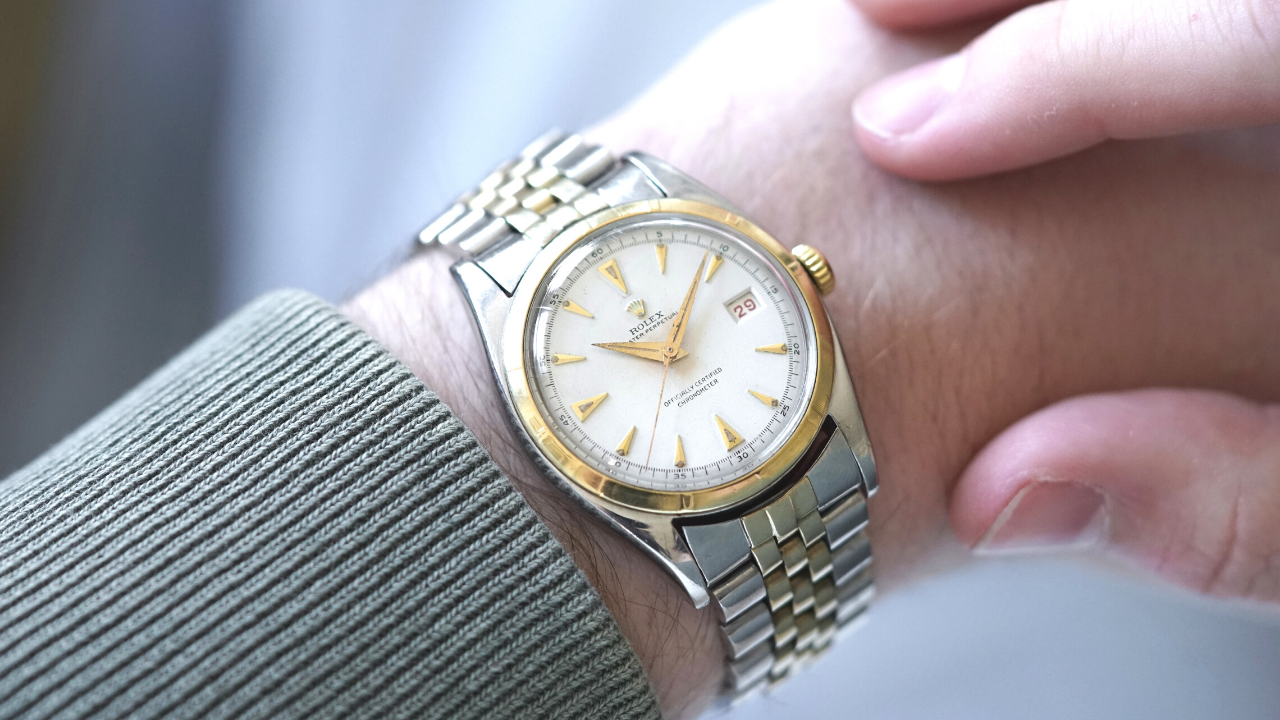
The first generation of Rolex Datejust watches was produced between 1945 and approximately 1957, while the second generation made an appearance in 1957 and remained in production until around 1959. All of these models will have 4-digit reference numbers that begin with either a 4, 5, or 6 and all of these models, regardless of their specific reference, will have 36mm case diameters, radium lume, non-quickset movements, and “pie-pan” dials that slope downward near their other edge. However, this is where most of the similarities end.
The first generation Rolex Datejust watches are powered by Cal. 7xx movements and due to the thicker design of their self-winding mechanisms, the casebacks on the first generation models bulge outward to accommodate their larger movements. Often referred to as “Bubbleback” Datejust watches by collectors due to their convex casebacks, the majority of these first series models will have roulette date discs that alternate between black and red numerals and many lack the now-signature Cyclops magnification lens on their crystals, as this feature did not make an appearance on the Rolex Datejust collection until the mid-1950s.
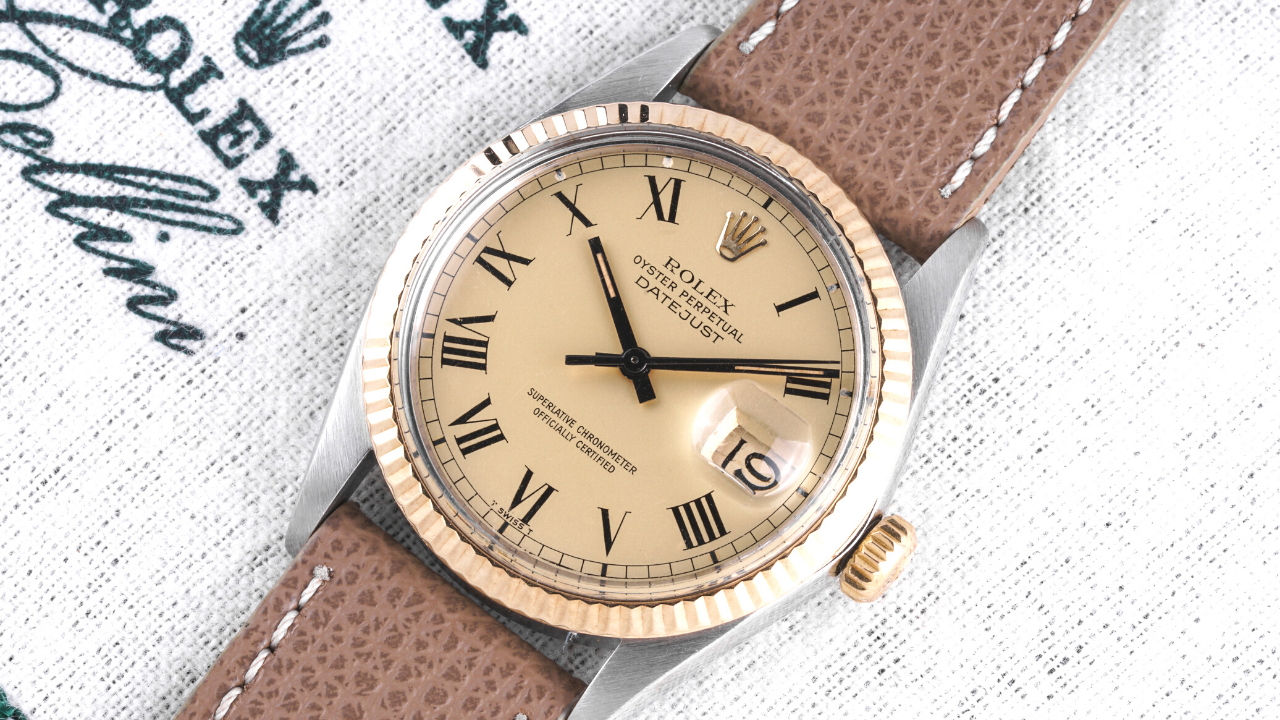
Other important changes also took place during the mid-1950s and these updates would go on to define Rolex’s Datejust collection in subsequent generations. While early examples from the first series do not have the “Datejust” name anywhere on their dials, this feature would become standard across the collection by the mid-1950s. Around the same time, Rolex updated the design of its fluted bezel from a finely fluted style to one with a thicker and more angular aesthetic. Lastly, the calendar mechanism was updated to change instantaneously at midnight – a feature that would set the standard for all date displays that followed.
In 1957, the second generation of Rolex Datejust watches made an appearance. With this series, Rolex updated the movement inside the Datejust to the Cal. 10xx series, which featured a significantly thinner automatic-winding mechanism that eliminated the need for the pronounced “Bubbleback” cases of the first generation. By this point, both the “Datejust” name and the Cyclops magnification lens had become standard across the range, as had the updated fluted bezel design, so the key differences between the first and second generation largely pertain to the internal movement and the shape of the caseback, with the second series sporting one with a much thinner and flatter overall profile.
While the fluted style of bezel is easily the most common type fitted to these first two generations of Datejust watches, both smooth and engine turned bezels were also fitted to certain examples. As for the dials, it is these first two generations that offer the greatest variety. Color options are fairly limited, but the style of hour markers, text, and even the hands can differ dramatically and it would be an impossible task to try and list every combination. Despite the new generation of movements, the second generation of Datejust watches was relatively short-lived, and by the end of 1958, Rolex was ready to roll out the third series, which would go on to remain in production for nearly two decades.
When the third generation of Rolex Datejust watches emerged in 1959, it marked the single most significant update to occur to the collection since its initial release, and it represents the point in the Datejust’s history when Rolex’s iconic calendar watch first started to take on a consistent design DNA that is still with the collection today.
 1975 Rolex Datejust (Ref. 1600) Grey Dial
1975 Rolex Datejust (Ref. 1600) Grey Dial 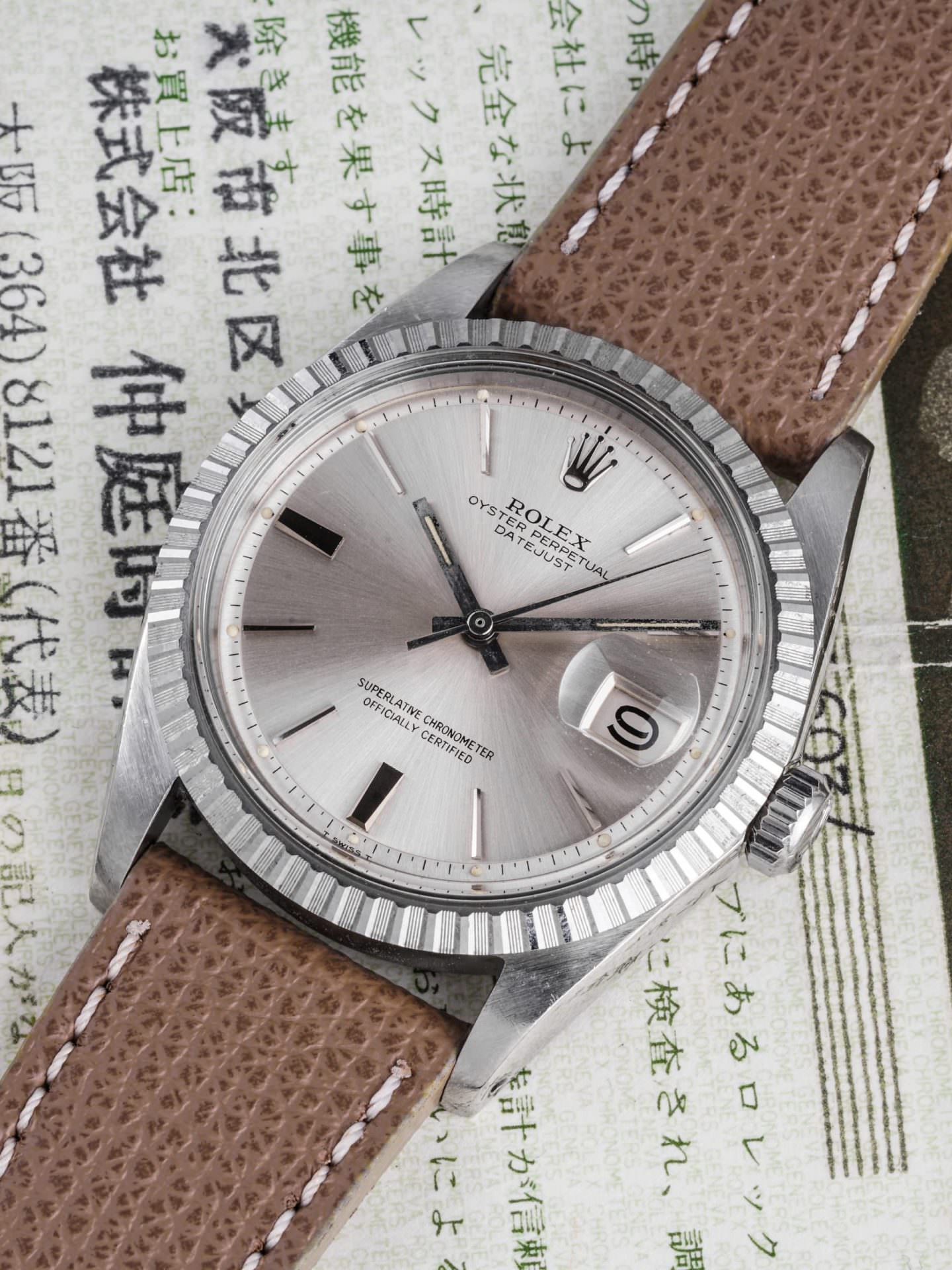 1966 Rolex Datejust (Ref. 1603) Silver "Doorstop" Dial
1966 Rolex Datejust (Ref. 1603) Silver "Doorstop" Dial 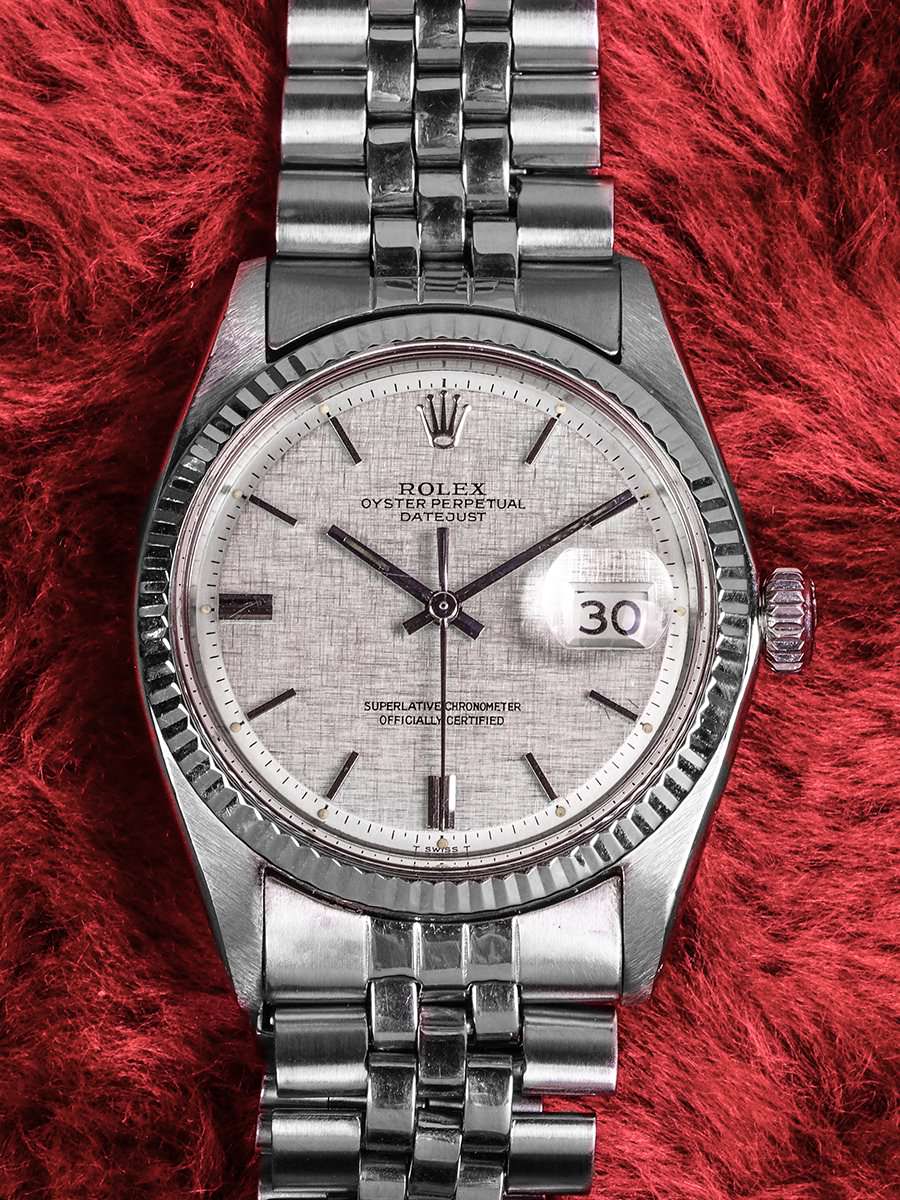 1968 Rolex Datejust (Ref. 1601) Silver "Linen Dial”
1968 Rolex Datejust (Ref. 1601) Silver "Linen Dial” All of the different models from the third series of Rolex Datejust watches feature 4-digit reference numbers that follow a 16xx format, where the last two digits denote the type of bezel fitted to the watch. With that in mind, at this point in the Datejust’s history, Rolex’s reference numbers did not denote the type of metal used in a watch’s construction, so a ref. 1600 Datejust can be either stainless steel, solid gold, or two-tone, since the 1600 reference number simply denotes the presence of a smooth bezel. Below are the most common reference numbers from the third generation of the Rolex Datejust and their corresponding bezel styles.
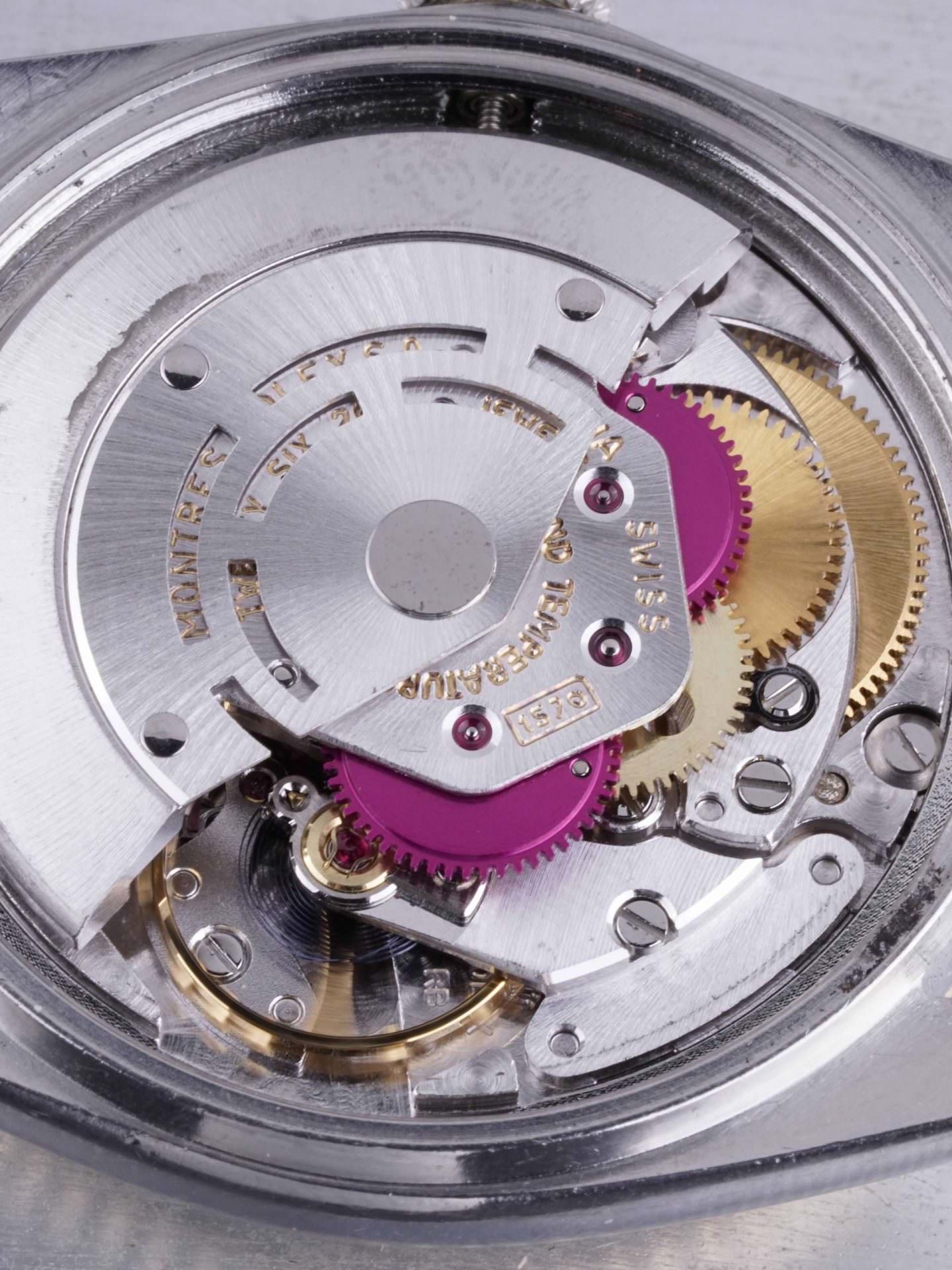
While the dials fitted to the third generation of the Datejust still followed the “pie-pan” style of their predecessors, they took on a much more consistent design, with far less variation present in regards to the text and style of hour markers. While the range of dial styles for the third generation of Datejust watches is far more limited than its predecessors, this does not mean that it is without ample options.
It was this third series that introduced a number of now-iconic styles, such as the textured dials with patterns like linen and mosaic, along with the ”Buckley” dials that feature painted Roman numeral hour markers and hands finished in either white or black to match the numerals. Additionally, while the style of hour markers became less diverse, the third generation of the Datejust still included a number of different options, such as the “Wide Boy” dial that features larger, bolder markers paired with a matching handset that sports a wider overall appearance.
Additionally, this third series of Datejust watches also introduced the Cal. 15xx series movements, which marked a significant step forward for the Datejust collection. Additionally, in 1972, Rolex added hacking seconds to the Datejust line, which means that the seconds hand comes to a complete stop when the crown is pulled out, enabling more precise time setting and synchronization.
This third generation of the Rolex Datejust is significantly more common than the previous two, which is not surprising considering that it remained in production for a longer period of time than both of the first two series combined. Consequently, examples from the third generation are often some of the most affordable Datejust models available, and they have become a popular target for collectors, as they combine inherently vintage design elements with an overall appearance that is still unmistakable as a Rolex Datejust.
With the arrival of a new movement in 1977, the Rolex Datejust was once again ready for an update. This marked the end of the ref. 16xx series, and signaled the arrival of an entirely new generation of Datejust watches with 5-digit reference numbers.

When the fourth series of Rolex Datejust watches arrived in the late 1970s, it marked the point in the collection’s history when it started to give up the decidedly vintage design elements that had been part of it from the very beginning. While the fourth generation still featured acrylic crystals, the sloped “pie-pan” dials had been replaced by entirely flat dials, creating a much more modern overall appearance. Additionally, while the style of hour markers and hands became even less diverse on this series, other dial textures joined the ones that had been introduced with the previous generation, such as tapestry and pyramid dials, along with other options such as semiprecious stones and hardwood dials.
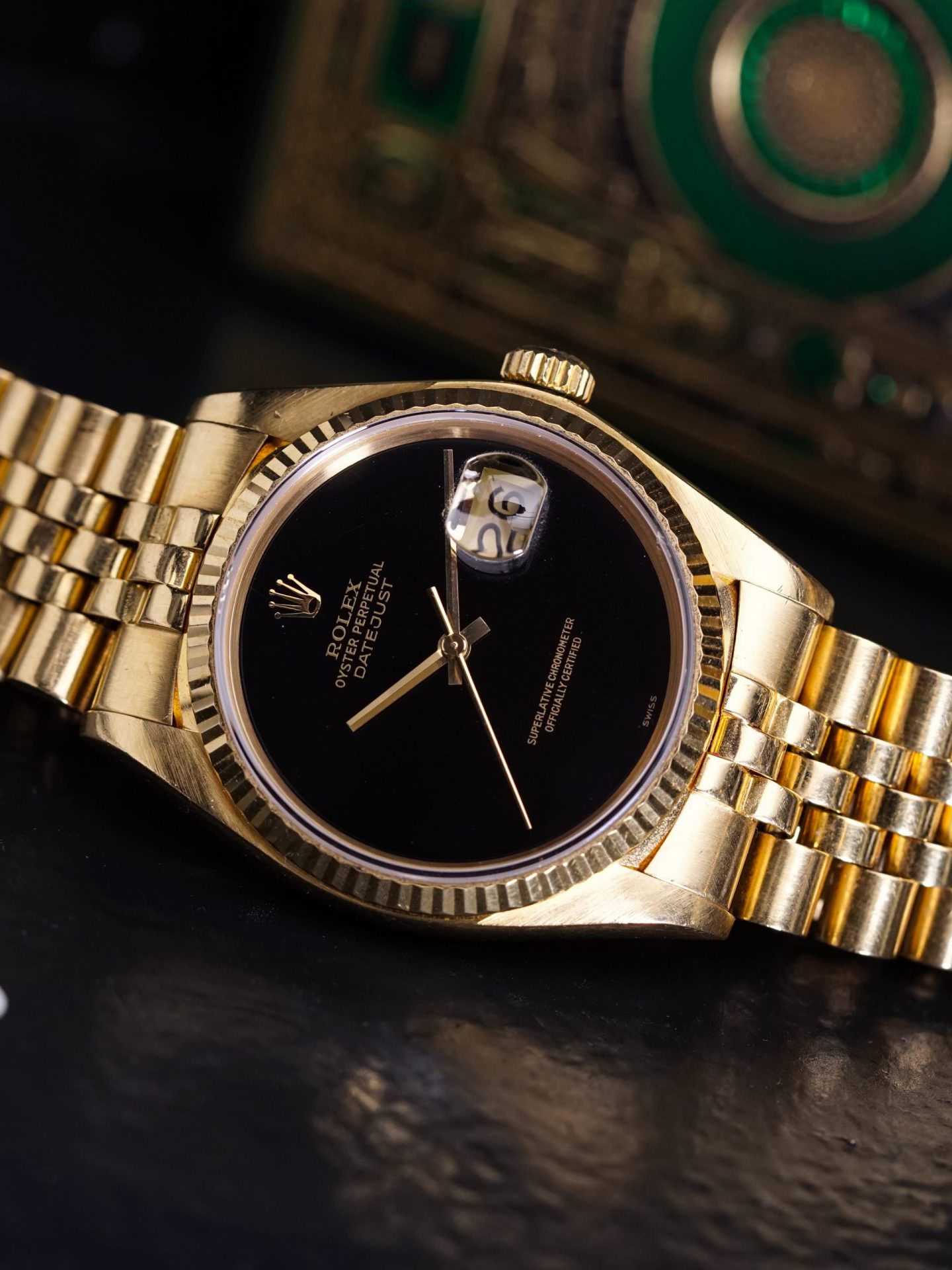
Another key detail to note about this fourth generation is that they feature 5-digit reference numbers that follow a 160xx format, with the last two digits of the number denoting bezel and metal type, respectively. The only exceptions to this were the Turn-O-Graph (also known as Thunderbird) models with rotating bezels that follow a 1625x format, with the last digit signifying the type of metal used for the watch. Below are the various reference numbers that make up the fourth generation of Datejust watches, along with their corresponding bezel styles and metal type.
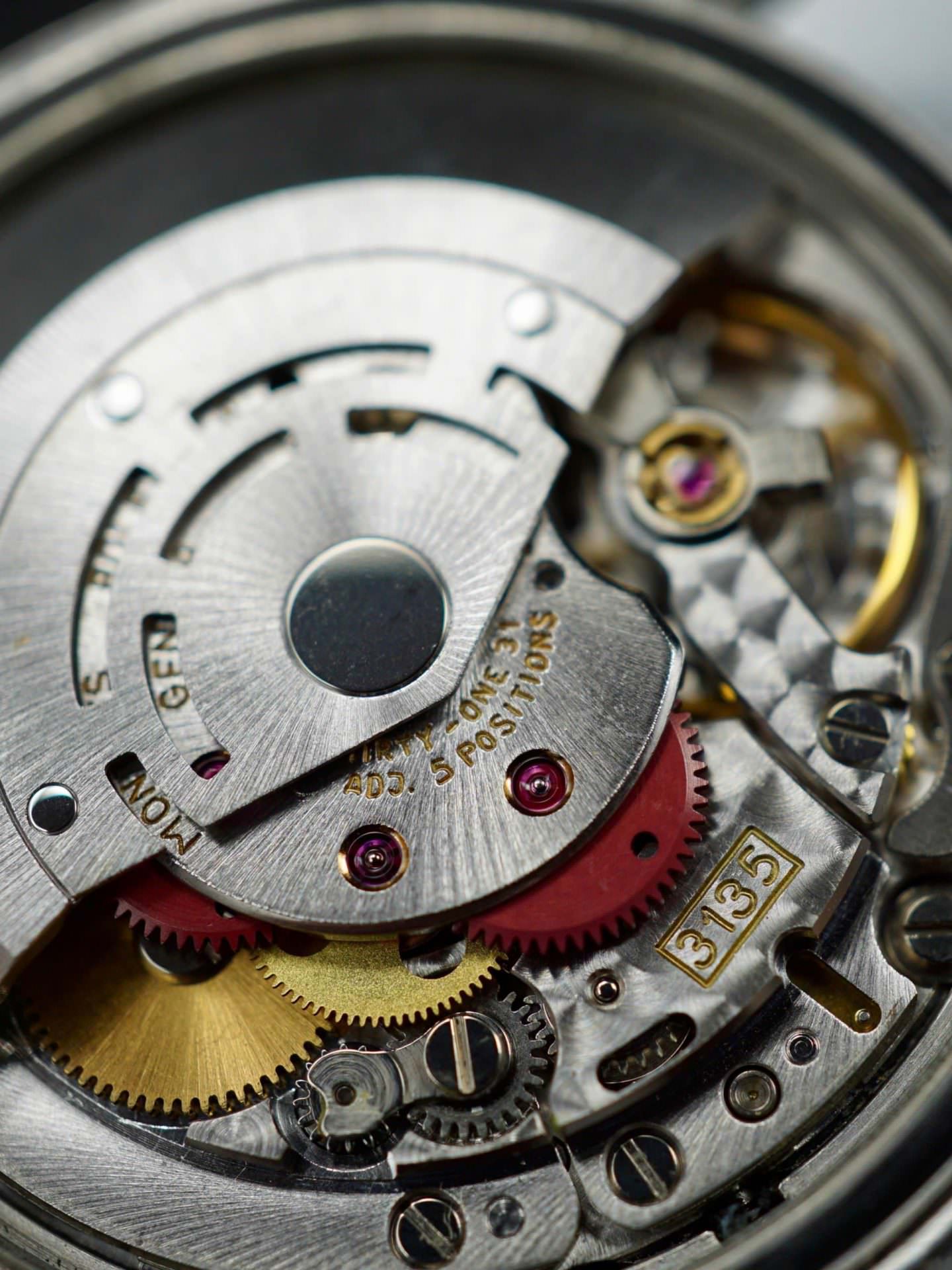
While this fourth series represented a significant step forward in terms of the overall aesthetics of the Rolex Datejust, the most significant update to accompany this new generation was the Cal. 3035 movement, which introduced both a high-beat frequency and a quickset date feature to the collection. Coupled with the updated aesthetics, the arrival of these two features started to bring the Rolex Datejust into the modern era, and there are even some collectors who do not consider this series as truly vintage, since its acrylic crystal is really the only decidedly vintage feature that it shares with its predecessors.
While this fourth-generation does lack some of the vintage charm that defines the previous three generations, it does benefit from improved timekeeping performance due to its higher frequency and increased convenience thanks to its quickset date feature. Additionally, as this series was produced into the late 1980s, replacement parts are significantly less expensive and easier to source. By 1988, Rolex had developed a new movement – the Cal. 3135, and when the Datejust line received an update later that year, the new generation featured a sapphire crystal for the first time, bringing the collection straight into the modern era.
So, which vintage Rolex Datejust is right for you? Ultimately, this is a decision that only you will be able to make for yourself, but there are a few key points to consider.
The various models from the first two generations will typically offer the most unique appearances and they have a decidedly vintage aesthetic that is emblematic of the 1940s and 1950s. However, if you purchase one that is not running or in need of service, you should be aware that replacement parts are not readily available, so getting it up and running will be a bit more of an involved process than if you opt for a vintage Datejust from either the third or fourth generations.
Consequently, if you choose a 5-digit model that was manufactured during the 1970s or 1980s, you will likely have no problems getting it to run within its intended specifications and replacement parts are in ample supply. However, what you sacrifice in exchange for this superior performance and ease of ownership are many of the unique vintage design elements that provide the older models with their one-of-a-kind appearances.
In the end, it really comes down to what you want out of your vintage Rolex Datejust and how you plan on wearing it. However, regardless of the specific model you choose, you will be getting a bonafide industry icon with an amazing history that is made by one of the very best brands in the business.

Check out 'Reference Tracks' our Spotify playlist. We’ll take you through what’s been spinning on the black circle at the C + T offices.

Never miss a watch. Get push notifications for new items and content as well as exclusive access to app only product launches.
Sign up for our newsletter to receive updates and exclusive offers